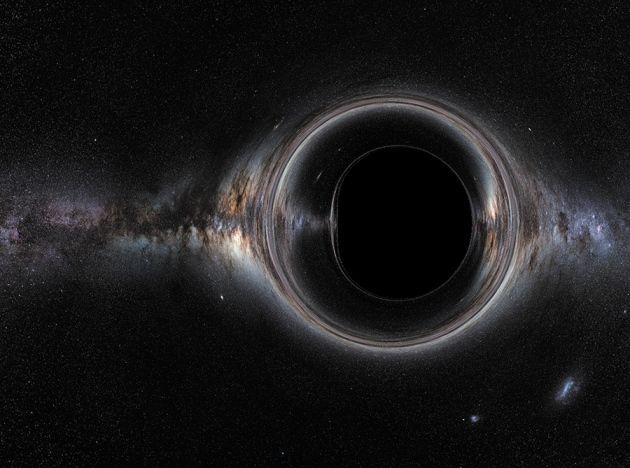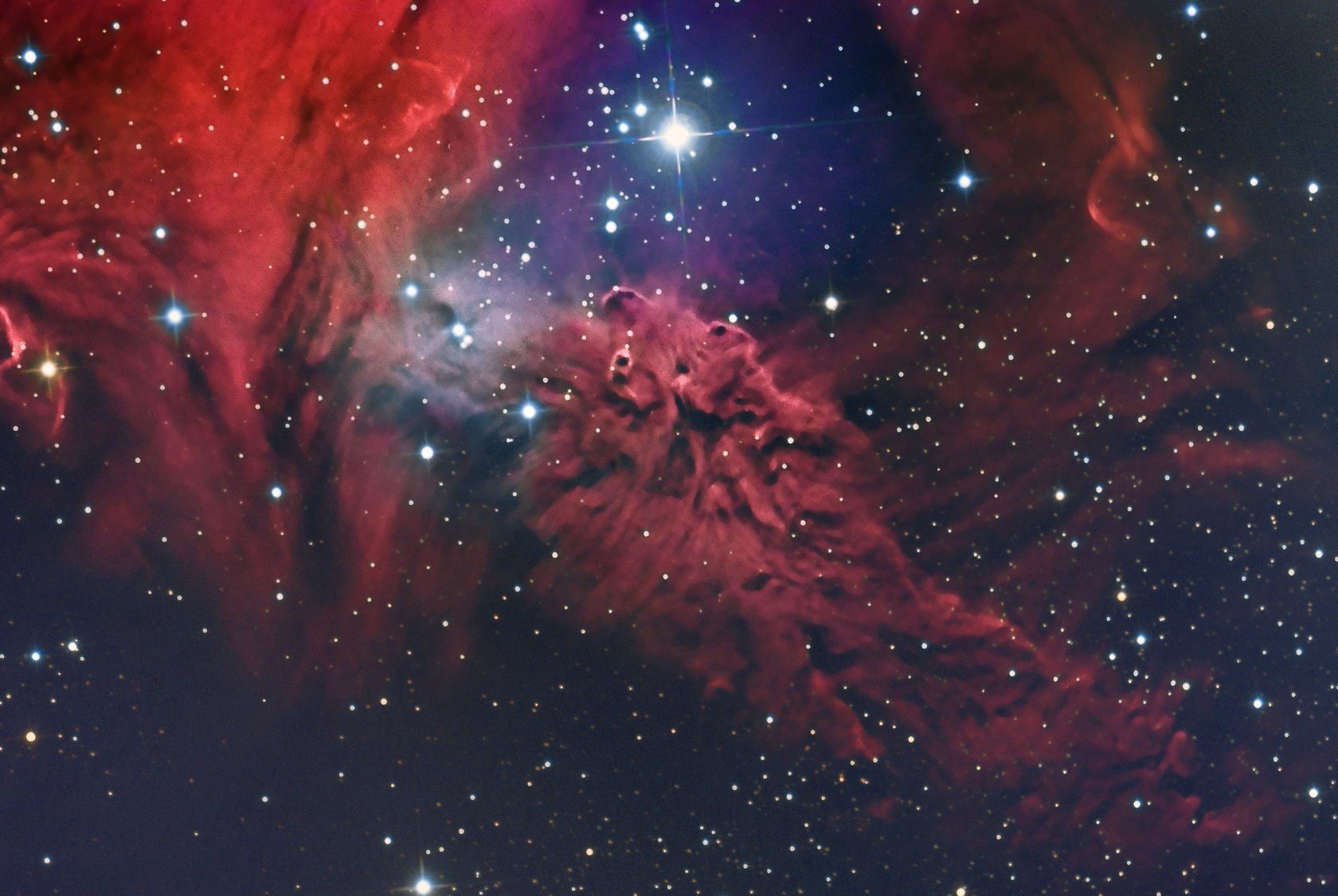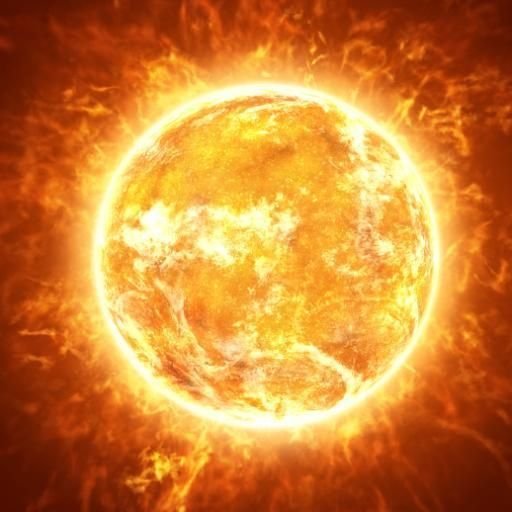“Curiosity Science Contest Response #1: A Star is Born”
It’s alive! That’s what she said when she saw it for the first time. Yes, they do exist and you see them in plain sight at night. I’m undoubtedly, and with no pun intended, describing my first date when we saw a shooting star together. I found it necessary to include it because that’s what comes to mind when I think about stars. But then I go off on a tangent into thinking how stars are born, what they do up there all night and even days which I found out in my early years along with the fact that the moon was not some spy drone sent to follow me around.
This is just a reflection on the human curiosity about the celestial body we call stars. They are a part of human life that is filled with mystery and awe to the viewers and artists. But how well do we know about them as thinkers; as scientists? This piece of writing tries to show the reader a basic fundamental concept of how a star is formed, how it’s life plays out and how it goes out with a bang. Or does it? (Spoiler alert) Let us get into it now.
HYDROGEN CLOUDS
No, they don’t rain on you. In fact, these clouds go way beyond our climates and weather concepts. These Hydrogen clouds are the first starting point when it comes to star formation. It’s the Holy Grail or should I say scientifically deemed as important- Grail when it comes to watching the beginning of star birth.
Hydrogen cloud is simply the condensed form of hydrogen. Hydrogen is the lightest and first element in the Periodic Table with 1 Electron, 1 Proton and no Neutron. It can be in different forms i.e. ionic form (H+ or H-), molecular (H2) and neutral atomic form (H). Among 99% of part occupied by gas in interstellar medium (ISM), hydrogen covers about 90% and helium covers about 10%. The ionized hydrogen emits radiation visible range and both neutral molecular and neutral atomic hydrogen emit radiation in radio region of electromagnetic spectrum.
H I Cloud
The HI cloud is nebula consisting of neutral hydrogen. The roman numeral I means no electron is lost. When the light is enough to break the molecular hydrogen into two but the photons don't have enough energy to ionize it, the neutral hydrogen is formed. So, they are clouds away from bright and hot stars. These clouds are relatively cold. They emit radiation in radio region.
The equilibrium states of neutral cloud left at typical pressure is either “cold” (about 80 K) or “warm” (about 8,000 K). They are determined by balancing that rate of heating and rate of cooling. The heating is due to ejection of electrons from dust grain by ultraviolet radiation and cooling is mainly due to excitation.
21-cm Line Radiation
The neutral hydrogen are in cold regions. So, the electron is in ground state. There is important quantum property of particle called spin. The spin of proton and electron can be in same direction called parallel spin. If the spin of proton and electron are in different direction then the spin is anti-parallel. When poles are aligned i.e. in parallel spin, atom is in higher energy state and when poles are opposite i.e. anti-parallel, atom is in lower energy state. The electron tries to be in lower energy state, so it flips back to anti-parallel spin from parallel spin. During this course, 21.1 cm wavelength of radiation is emitted. Hence it is called 21- cm Line Radiation. It is important because it is used to map the galaxy.
H II Cloud
The H II cloud is nebula of ionic hydrogen. The roman numeral II means one electron is lost. They are relatively hotter than HI regions. They are partially present in cloud in which star formation has just started.
The ultraviolet radiation from the hot and bright stars ionizes the surrounding of HI cloud at first. The ionized electron when recombine with other proton, visible light of wavelength 6563 °A is emitted.
Molecular Cloud
The molecular cloud is nebula of molecular hydrogen(H_2). At higher densities, stars tend to form molecular hydrogen. It is extremely difficult to detect them. It is stable and it needs high energy to excite. For H_2, the first excited state, the J = 1 rotational state, is 100-200 K above the ground state. This energy gap between the ground state and the first excited state is far larger than for any other simple molecule, and the underlying reason for this large energy is the low mass of hydrogen.
energy level spacing ∝ m^{-1/2}
Carbon monoxide is used to detect the H_2 as it is assumed that ratio of luminosity of CO and mass of H_2 remains constant.
Brief Overview
| Type of cloud | Neutral Hydrogen | Ionic Hydrogen | Molecular Hydrogen |
|---|---|---|---|
| Symbol | H I | H II | H_2 |
| Temperature | 100 K | 10,000 K | 10 K |
| Particle density | 10-100 atoms/cm^3 | 103-104 ions/cm^3 | 1000 molecules/cm^3 |
| Emission range | radio | visible | radio |
STARS
Hot luminous sphere of plasma held together by its own gravity, formed when dense region within molecular clouds, also referred as ‘star forming regions’, fuse together. Hydrogen at this region is in molecular form, hence referred to as molecular clouds.
Stars formation begins when the denser parts collapse under their own weight/gravity. These clouds of gases will remain in equilibrium as long as the kinetic energy resulted by gas pressure is balanced by the potential energy of the internal gravity force. But, if the cloud is massive enough such that the gas pressure is insufficient to sustain it, the cloud collapses. The core portion being denser than the outer part, collapses first and breaks into many cloud fragments and then these fragments are what that get transformed to protostars.
These protostars have their own unique identity, own gravity and are disc shaped. As the gravity of these new born stars pull loose gases from its mother cloud, it’s temperature and mass increases and they become hotter and denser with passing time. As the temperature rises to 18 million degrees, a miraculous transformation takes place, hydrogen atoms fuse together to form helium and with a burst of nuclear energy, a star begins to shine. It’s this nuclear reaction that empowers the star throughout its life.
From then on, it’s a constant battle between the star’s gravity and the pressure energy generated by the fusion reaction. And when the star gets depleted of hydrogen, it no longer has the elements required for the fusion reaction. The gravity then starts pulling everything towards the core, resulting in contraction of the star. As the core contracts, it starts getting hotter and when temperature reaches a certain value, helium present in the star starts fusing with each other to form carbon. And once all the helium is used up, the core starts expanding while cooling it. The core then cools itself into white dwarf, then a black dwarf or the gravity of star causes it to collapse and explodes into a supernova, depending on the size of the star.
“A human lifetime is too short to witness the wonder of a star’s birth.”
And my personal favorite "forget Jesus, stars died so that you could be here."
BLACK HOLES
Now that you are this far, You probably asked yourself this already, “what exactly happens when a star dies?” And no, they don’t go into the hall of fame. Not the star we are discussing. I will address the question because I’m afraid otherwise it might haunt us for the rest of our lives. Speaking of lives, black hole is what a star turns into after it has lived its own life.

As the star is at the end of depleting its fuel in the core, which is basically Hydrogen, the outer shell collapses into the core and becomes immensely dense. To give you an idea of the density we could look at the density of any stellar black hole. With a mass of 2×10^{31} kg and a volume of 3.4×10^{12} m^3, the density would be mass/volume, or 6×10^{18} kg/m^3. This means a mass 6 quintillion fit inside a one liter water bottle. Now, that’s a heavy bottle!
And since the mass has been compacted, we need to understand that gravity does not really care for the size of the object but the mass. Which means even though the black hole might seem like a space saver with so much mass going into such small volume, the gravity is still very high. So high that “not even light can escape it”. This is because the gravity is high enough to warp the space around it which also affects the direction of light.
With this compact mass, it can necessarily be called a singularity. A singularity is defined as an infinitely dense mass point with zero volume. And the line that separates the light from the dark side is the event horizon. This is the point of no return. Any matter or light, for that matter, cannot escape the black hole once it has gone past this point into the black hole.
Bonus Section
Want to form your own black hole? Well now you can!! ( Probably not. But hear me out.)
You know how stars become a black hole. They turn into small points with high density. So, couldn’t you do this with anything, and I mean anything? The answer is yes…and no.
Well, first let us understand escape velocity. Escape velocity is the velocity with which any body would need to move in order to escape the gravity of a huge mass. No, I’m not talking about your fat bully. So, in case of a black hole, the escape velocity would have to be more than the speed of light; if not at least. The escape velocity of any body with mass M is given by:
V= √(GM/R)
Where, G is the Universal gravitational constant.
R is the radius of the body.
Now if you plug in the value of velocity as the speed of light(c) you get a value of R called the Schwarzschild radius.
R_s = (2GM/ c^2)
This is the parameter that defines the size to which a body must be compacted in order for it to essentially turn into a black hole. But it would require a lot of pressure and most objects we see around us usually cannot withstand the pressure and reach failure. So, yes we can turn anything into a black hole theoretically. But no, we cannot do this pragmatically. This makes stars the perfect candidates for turning into a black hole.
Thus ends the life cycle of the star; turning into a dark, life sucking abyss. But hey, science is fun huh?


Nice writing. I really enjoyed reading this one! Keep up the good work!! :)
Black holes part was best part written by me. :P
Nice read @gauss01, nicely composed post and I liked the introduction too.. cheers :)
@himal thank you
Wow, this is awesome. You’ve got some skills. Thanks for sharing, will look forward to your future posts.
welcome and thank you sir
very nice!
i likey!
thank you!!
Hi, @Gauss01, In case this has been your first Introdusemyself Post i'm here to welcome you to Steemit. I hope you have a lot of fun here and you may follow me. Have a great time @rightuppercorner
kindly upvote and resteem it
@rightuppercorner
Great and unique post keep it up! :)
Thanks :D
You are welcome :)